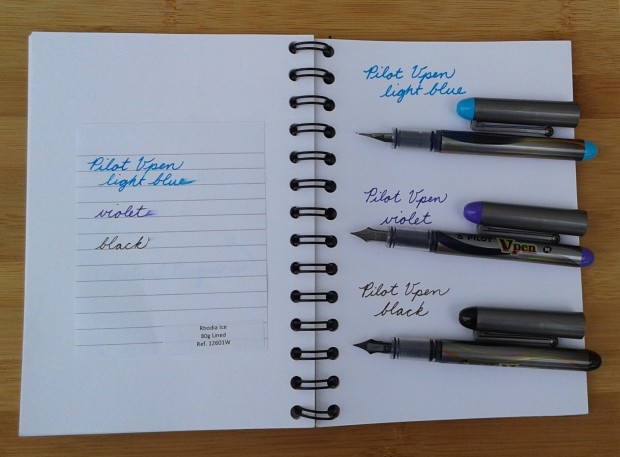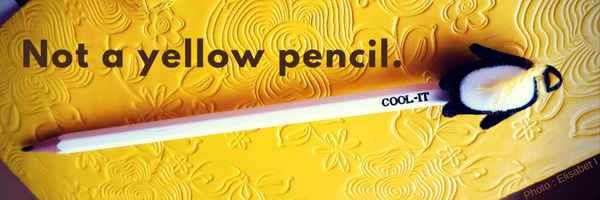Last month I received two questions from actual readers of this blog (no, I am not so desperate for topics that I am making up questions). I am away on holidays so I prepared answers ahead of time.
The first question was, which do I prefer, blue or black ink? My answer is why limit yourself to just blue or black. Thanks to modern chemistry there is a whole spectrum of ink colours to choose from. While not all of them may be practical or appropriate for an office setting, there is something to be said for going for a distinctive shade. Here are some options:
Black

Black is a very traditional colour for ink and is sometimes required for use on forms. It is a very common colour for pens so I was able to round up a lot of them for my comparison. I was a bit surprised how much black inks vary in tone, some are much darker than others. I couple of these pens I have discussed before (Sharpie and Pilot FriXion). The Pelican Techno-Liner and Staedtler pigment liner I use more as drawing pens even though they write very well. The big surprise for me was the Papermate Inkjoy gel pen. I have tried the Inkjoy ballpoint pens and while they are fine for cheap pens, really nothing special. The gel pen version of this line is great. The barrel is a bit on the fat side but the writing is smooth and the ink very dark.
Blue

I was surprised at how few blue pens I had in my stash as generally I think of them as very common. I have given my opinion on the Sharpie and Inkjoy before and really there is not much to say about the Pentel RSVP. It is a very basic ballpoint stick pen with a nice rubber grip but not much to write a blog about. This one is a medium (1.0 mm point size) and writes fairly smoothly but like most ballpoints there is some unevenness in the line.
Turquoise

I wondered about including the Staedtler fineliner as I use it as an extremely fine marker more than as a pen but it does write well and the slightly triangular shape of the barrel stops it from rolling around. The Zebra Z-grip and the Inkjoy I have discussed before but the real find here is the Pilot Vpen. It deserves a blog of its own in the future. It is a disposable fountain pen which would be great for anyone who wants to try out a fountain pen without shelling out a lot of money. The colour of the ink is dark enough that I would consider this the only one of this group that could be taken seriously as a pen.
Brown and orange

The paleness and lack of gravitas of the orange pen make it pretty obvious why there are not a lot of orange pens out there but I was a bit surprised at how few brown pens there are. Brown was a traditional ink colour (think of ancient manuscripts) and can be quite readable but just doesn’t seem that popular.
Green

I had so many green pens to include I could hardly fit them all on the page. I have no explanation for this as I wouldn’t have thought it would be that common a pen colour. In its darker forms, green is a very attractive and readable ink. I liked the smoothness of the Pentel Slicci but the thinness of the barrel makes it less comfortable to write with. The Pentel Energel was more comfortable but slightly less smooth to write with. The metallic sheen of the gel pen puts it into the novelty pen category but it is still very readable.
Purple

Purple is another colour I think can be taken seriously as an ink providing it is dark enough. After all, it was good enough for Byzantine royalty to sign their edicts with. I actually use the purple Pilot V5 Hi-Tecpoint all the time at work and have had no indication that people are laughing behind my back because of it.
Red

I rarely use red because it reminds me of teacher’s pointing out mistakes so I was surprised at how many red pens I was able to round up. Of these pens, the Pilot V5 Hi-Tecpoint provides the deepest colour and smoothest line.
Pink

Pink is a nice cheery colour but it just seems too childish to be taken seriously as an ink. The Bic pen is a novelty pen that originally had four colours, turquoise, purple, light green, and pink. Of course, the turquoise and purple got used up first because what do you want to write in light green and pink?
If these pens were people they would be a mass of humanity. Different colours, strengths and weakness but really as they are all pens they have more in common than differences.
A shout out to Neil for lending me a number of his pens (including the wonderful Vpen) to include in my tests and to Deirdre and Jasmine for the question.














